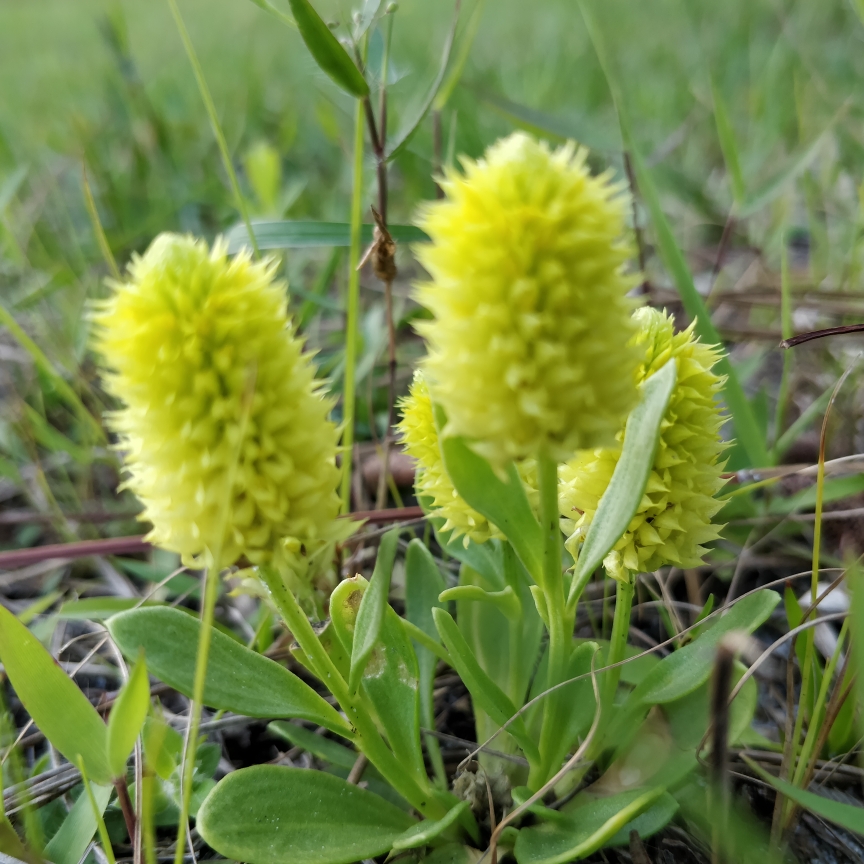
Polygala rugelii
Yellow Milkwort
Polygala can be annuals, evergreen perennials or shrubs. The leaves are simple, and the pea-like flowers appear in clusters in Spring. In fact the flowers are different from pea flowers in that they lack the standard, and have two wings and a keel. 'Yellow Milkwort' (Polygala rugelii) - endemic to Florida - is a more robust member of the milkwort family. It occurs in moist to wet soil habitats where it gets high levels of sunlight; open savannas, marsh edges and wet pine flatwoods. It is an annual -sometimes biennial - that forms an irregular rosette of leaves from which a flower stem arises, and then the basal leaves mostly wither and disappear. The flower stalk stands about 1-3 feet tall and is often branched. The round flower buds are at the end of each stem, and open to bright yellow 1" showy flowers that are pollinated by insects. Flowering is in the late summer and early fall.
Contributed by @reneepi
-
Full sun
-
Occasional watering
-
Not Frost hardy
-
Moist and free draining
Common name
Yellow Milkwort
Latin name
Polygala rugelii
type
Herbaceous Perennials
family
Polygalaceae
ph
5.5 - 8.5 Acid - Neutral
Plant & bloom calendar
-
Best time to plant
-
When the plant will bloom
full grown dimensions
 0.50 M
1.00 M
0.50 M
1.00 M
Polygala rugelii
Polygala can be annuals, evergreen perennials or shrubs. The leaves are simple, and the pea-like flowers appear in clusters in Spring. In fact the flowers are different from pea flowers in that they lack the standard, and have two wings and a keel. 'Yellow Milkwort' (Polygala rugelii) - endemic to Florida - is a more robust member of the milkwort family. It occurs in moist to wet soil habitats where it gets high levels of sunlight; open savannas, marsh edges and wet pine flatwoods. It is an annual -sometimes biennial - that forms an irregular rosette of leaves from which a flower stem arises, and then the basal leaves mostly wither and disappear. The flower stalk stands about 1-3 feet tall and is often branched. The round flower buds are at the end of each stem, and open to bright yellow 1" showy flowers that are pollinated by insects. Flowering is in the late summer and early fall.
Flowering
From Early Spring TO Early Autumn
Clusters of somewhat pea-like purple, or pink flowers appear, in Spring, Summer and Autumn
Planting
From Mid Spring TO Late Spring
Plant in moist, fairly fertile, free-draining soil in a sheltered sunny or partially sunny site. Not frost hardy, so in cooler climes protect from frost, or grow in a container so that it can be brought indoors in colder months.
Propagating by cuttings
From Early Autumn TO Mid Autumn
Take semi- ripe cuttings from this season's growth in Autumn. Cut neatly, just below a leaf node, a 5" approx. piece of a healthy shoot that has soft growth at the tip. pinch out the growing tip, and cut off the bottom leaves. Dip the bottom of the cutting in hormone rooting powder, and carefully place in a pot of cutting compost with the leaves just above the level of the compost. Water, label, cover with a polythene bag, and place in a warm, bright place, out of direct sunlight. Take the polythene bag off periodically for a while for ventilation (at least twice a week)









